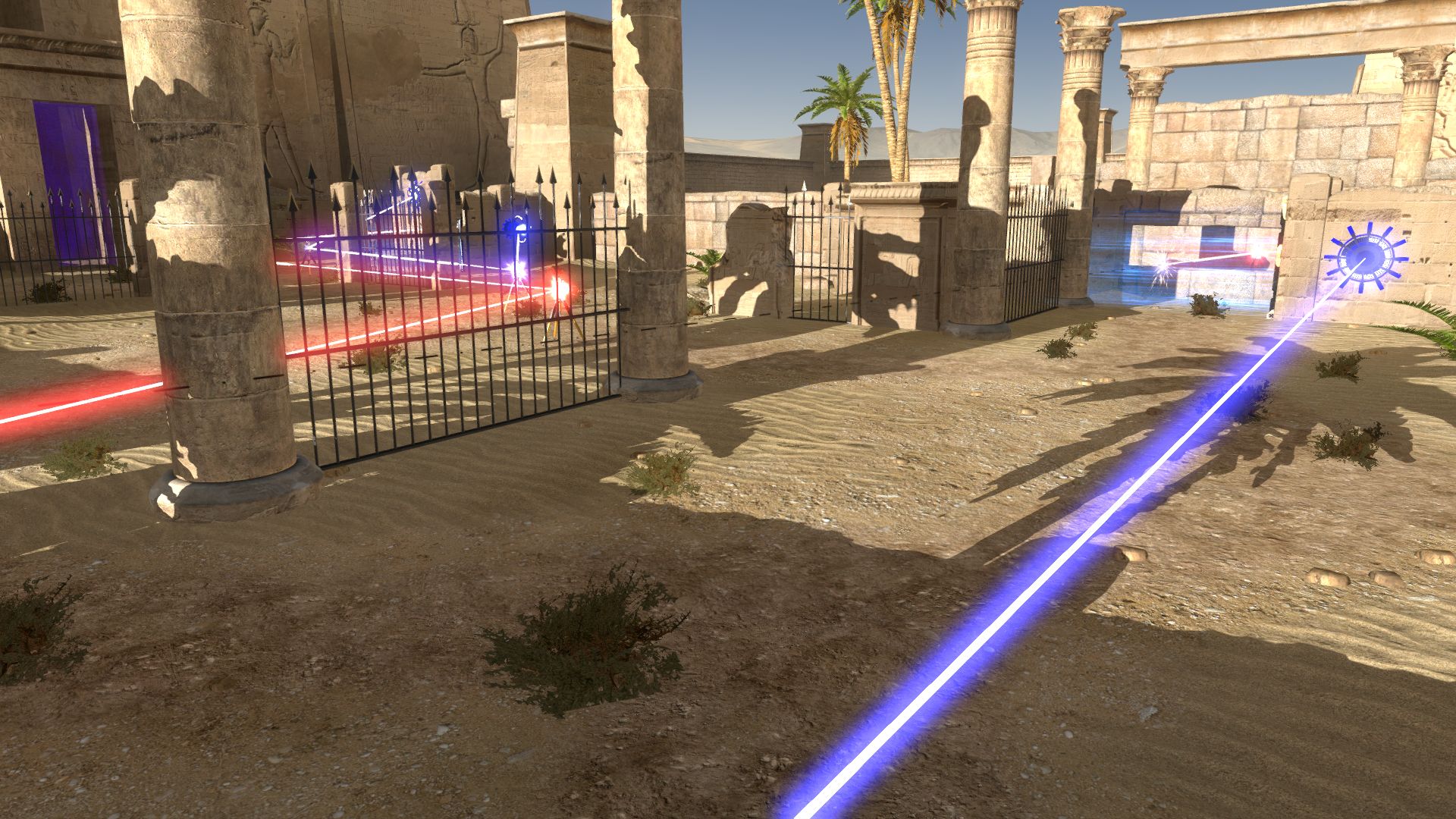

A hexahedron can act as a stepping stone over treacherous terrain. A jammer can weigh down a pressure plate while deactivating a device remotely. Later, connectors are used to manipulate lasers, hexahedra will weigh down pressure plates, fans can push objects, and more.Ī lot of the puzzles use these tools in a straightforward manner, but the best ones require the player to discover alternate functions. Initially, the main tool to deal with these obstacles is the jammer, which can shut down any electronic devices. These start out simple, with only a couple of tools available, but eventually become more complex and more devious.īarring access to the Sigils are energy barriers, automated turrets, and explosive drones. Most of these have the same basic goal: find a way to get to the Sigil (a colored tetromino) at the end of each of the small, discrete puzzle rooms. The meat of The Talos Principle is in the puzzles. Rig: AMD Phenom II X2 555 3.2 GHz, with 4GB of RAM, ATI Radeon HD 5700, Windows 7 64-bit The Talos Principle (Linux, Mac, PC, PlayStation 4) The demand that the player really think is the thread that ties the whole game together. The real strength of the title is that while each could reasonably exist without the other, both elicit the above response in equal measure. The Talos Principle consists of two largely separate interactions: physics-based puzzles and philosophical discussion. I can only imagine the puzzled look on my face as I considered options, ran scenarios in my head, and generally did a lot more thinking than most games ask of players. If you haven't played this game on a different platform, I definitely recommend giving it a go on the Switch.While playing The Talos Principle, much of my time was spent sitting at my desk, chin in hand, deep in thought. Overall, The Talos Principle: Deluxe Edition is a solid first-person puzzle game that provides player with a satisfactory experience they can have at their own pace. The Frame rate also sees a few drops when played in Docked mode but nothing that is severe enough to affect gameplay. The only problem I had with The Talos Principle on the Nintendo Switch is that loading between stages can be a bit long. I had to turn on my “Nitpicky” mode to find something bad about this game. The game also has an outstanding soundtrack that supports the game's narrative. The world is presented in a very calming and beautiful images that keeps players interested. The main game has a total of 120 puzzles.Įven though the story and the puzzles are great, I think the game's beauty comes from the art style. It starts you off with puzzles that can be solved by hamming gates or tinkering with drones and then progresses to include aspects like time manipulation. The game does a great job preparing players to the harder puzzles. Some puzzle seem obvious, while it can take a while to get used to the mechanics of some of the others. The puzzles start out easy, but rack up in difficulty the more the game progresses. This system gives the players a smooth non-frustrating experience that gives them the chance to think about puzzles themselves rather than result to walkthroughs just because they must solve the puzzle to move on. If you are stuck on a certain puzzle, you can just leave and solve other ones and then come back to it later. The temple gives you access to further tools and even different worlds. The game opens up even more after the temple is unlocked. There is no exact order to which you need to solve these puzzles. What is exciting about The Talos Principle is the freedom that it gives players. The player needs to solve puzzles in order to collect these sigils. These sigils are needed to unlock the temple. The objective of the game at the beginning is to collect Tetris-Esque sigils. But it is all very unique and open to interpretation. Some provide QR codes that then reveal spiritual and philosophical quotes, while others put you through strange personality tests. During the game, you will interact with these old-fashioned computer terminals, each of which bring you closer to the story. It takes on a lot of biblical and theological references. The story is presented in an elegant and exciting way. As a player, you are intrigued to move on and find out who, what, where, and why. I think that was a great start to the game.

A quick look around shows that this temple is equipped with advanced technology.Ī voice is heard addressing the player, stating that it is your maker and asking you to seek out Elohim your creator in his temple and to prove your worthiness. The game starts with the robot main character waking up in what looks like a deserted temple. I was excited when the game was announced for the switch as it felt like it would be a great fit for the system. The game was initially released on Windows, OS X and Linux. The Talos Principle is a first-person puzzle game that was first released in 2014.


 0 kommentar(er)
0 kommentar(er)
